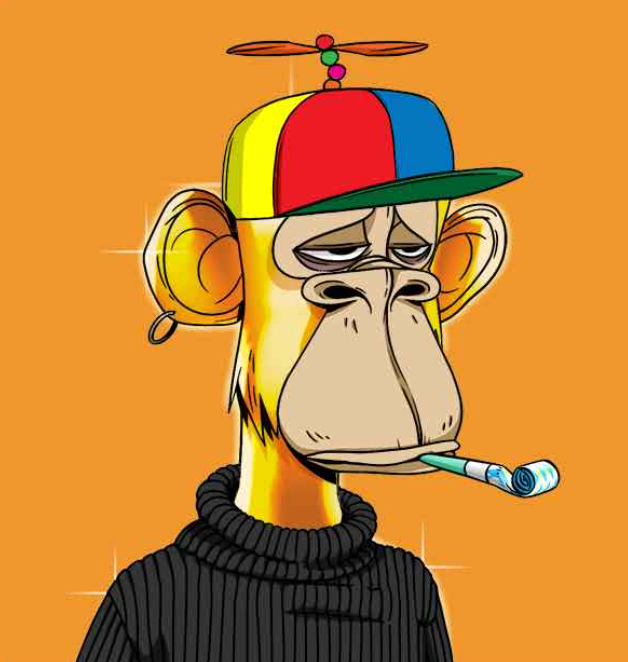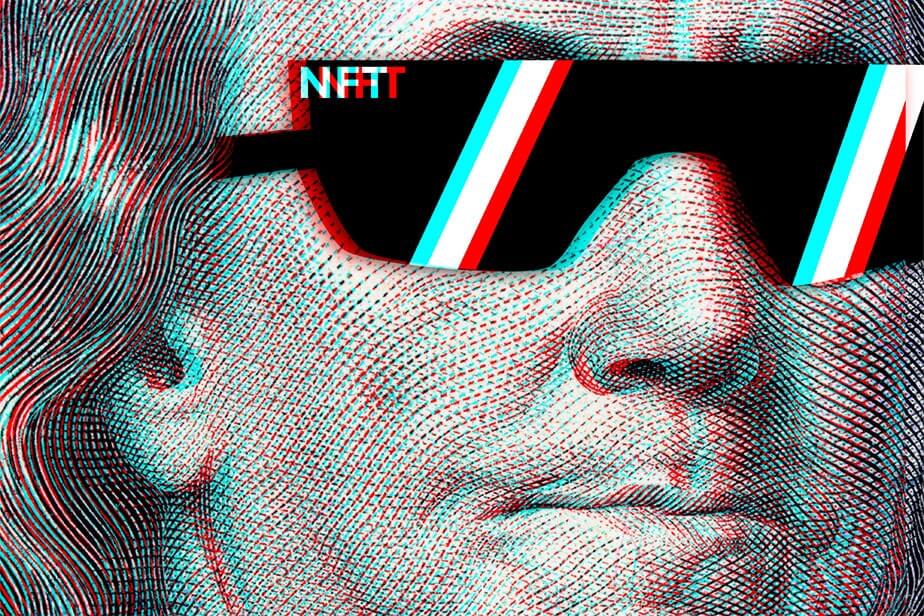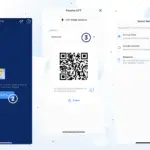NFT art is digital artwork tied to a unique blockchain token. It certifies ownership and authenticity of the digital piece.
NFT art has revolutionized the art world by leveraging blockchain technology. Artists create digital pieces and mint them as NFTs, ensuring their work is unique and verifiable. Collectors can purchase, sell, and trade these digital assets on various NFT marketplaces.
This innovation opens new opportunities for artists to monetize their work directly, bypassing traditional galleries and auction houses. The rise of NFT art has led to a surge in digital creativity, attracting both established and emerging artists. As the market grows, it is reshaping how we perceive and value digital art.

Introduction To Nft Art
NFT art is a new and exciting form of digital artwork. NFTs, or Non-Fungible Tokens, are unique digital assets. They are stored on a blockchain and can represent ownership of digital art. This makes NFT art different from traditional digital art.
Traditional digital art can be easily copied. NFTs ensure that the artwork is unique and owned by a single person. This creates scarcity and value for digital art. Let’s dive into the origins of NFTs and their impact on digital art.
Origins Of Nfts
The concept of NFTs dates back to the early days of blockchain technology. Bitcoin introduced blockchain technology to the world. Later, Ethereum expanded on this technology. Ethereum allowed for the creation of smart contracts. Smart contracts made NFTs possible.
The first popular NFT project was CryptoKitties in 2017. CryptoKitties allowed users to buy, sell, and breed digital cats. Each cat was unique and stored as an NFT. This project showed the potential of NFTs in the digital world. Since then, NFTs have grown in popularity.
Impact On Digital Art
NFTs have revolutionized the digital art world. Artists can now sell their digital art as unique pieces. This gives digital artists more control over their work. They can also earn royalties from resales of their art.
Collectors benefit from NFTs as well. They can own a unique piece of digital art. They also have proof of ownership stored on the blockchain. This adds value and prestige to their collection.
Here are some key impacts of NFTs on digital art:
- Ownership: Artists retain ownership and control over their art.
- Royalties: Artists earn royalties from future sales.
- Scarcity: NFTs create scarcity, increasing the value of digital art.
- Provenance: Ownership and history of the art are easily verified.
NFTs have opened new opportunities for digital artists and collectors. They have brought value and recognition to digital art. NFT art is here to stay and continues to grow in popularity.

How Nfts Work
Understanding how NFTs work can be both fascinating and complex. This section breaks down the fundamental elements of NFTs and their underlying technology. NFTs, or Non-Fungible Tokens, are a unique type of digital asset. These assets use blockchain technology to verify ownership and authenticity.
Blockchain Technology
Blockchain technology is the backbone of NFTs. It ensures that each NFT is unique and cannot be duplicated. A blockchain is a decentralized digital ledger. It records transactions across multiple computers. This makes data secure and transparent. The most popular blockchain for NFTs is Ethereum. However, other blockchains like Binance Smart Chain and Flow are also used.
| Blockchain | Purpose | Popular Use |
|---|---|---|
| Ethereum | Smart Contracts | NFTs, DeFi |
| Binance Smart Chain | Lower Fees | NFTs, DeFi |
| Flow | Scalability | NFTs |
Smart Contracts
Smart contracts are self-executing contracts with the terms directly written into code. They are stored on the blockchain. These contracts automatically enforce the terms of the agreement. This makes transactions faster and more secure. Smart contracts ensure that creators get royalties whenever their art is resold. They eliminate the need for intermediaries.
- Automatic execution of terms
- Eliminate intermediaries
- Secure and transparent
- Enable royalties for creators
Using smart contracts, artists can create and sell their NFT art directly to buyers. This opens up new revenue streams for digital creators. It also provides proof of ownership and authenticity to buyers.
Benefits For Artists
Discover the incredible benefits of NFT art for artists. This new digital frontier offers numerous advantages, empowering artists in unprecedented ways.
Ownership And Royalties
NFTs provide artists with true ownership of their digital artwork. Each piece is unique and cannot be copied without permission. This ensures artists retain control over their creations.
Another key advantage is automatic royalties. With NFTs, artists earn a percentage every time their art is resold. This guarantees ongoing income and rewards artists for their creativity.
Global Exposure
NFT platforms offer artists a chance to reach a global audience. Unlike traditional art galleries, digital platforms have no geographical limitations.
Artists can showcase their work to millions of potential buyers worldwide. This increases their chances of finding patrons and building a loyal following.
Additionally, social media and online communities help artists gain instant visibility. Sharing NFT art on these platforms can lead to viral success and greater recognition.
| Benefit | Description |
|---|---|
| Ownership | Artists have control over their digital artwork. |
| Royalties | Earn a percentage from each resale. |
| Global Exposure | Reach a worldwide audience. |
| Instant Visibility | Gain recognition through social media. |
Challenges And Criticisms
NFT art has gained enormous popularity, yet it faces significant challenges and criticisms. These issues range from environmental concerns to market volatility. Let’s explore these challenges in detail.
Environmental Concerns
Creating and trading NFTs require substantial energy. Most NFTs are minted on Ethereum. Ethereum uses a proof-of-work mechanism, consuming a lot of electricity. This high energy consumption leads to a large carbon footprint. Critics argue that NFT art is not eco-friendly. They urge for more sustainable blockchain solutions. Alternatives like proof-of-stake are more energy-efficient. Artists and buyers are encouraged to choose greener options.
Market Volatility
The NFT market is highly volatile. Prices of NFTs can fluctuate wildly. This unpredictability makes investing risky. Some NFTs sell for millions one day, and much less the next. This volatility can deter potential investors. It can also cause financial losses for existing investors. The market’s speculative nature fuels rapid price changes. Long-term value of NFTs remains uncertain. Critics question the true worth of digital art. They advise caution when entering this market.
| Challenge | Details |
|---|---|
| Environmental Concerns | High energy consumption due to proof-of-work mechanism |
| Market Volatility | Unpredictable prices causing investment risks |
- Energy consumption: NFTs require substantial electricity.
- Carbon footprint: High energy use leads to environmental impact.
- Price fluctuation: NFT prices can change rapidly.
- Investment risks: Volatility poses financial dangers.
Popular Nft Marketplaces
Are you curious about Popular NFT Marketplaces? These platforms are where digital artists and collectors meet. They buy, sell, and trade NFT art. Let’s explore some of the most popular NFT marketplaces.
Opensea
OpenSea is one of the largest NFT marketplaces. It supports a wide range of digital assets. Artists and collectors love its variety and user-friendly interface.
- Supports different types of digital assets.
- Easy-to-use interface.
- Large and active community.
OpenSea’s broad selection attracts both beginners and experts. It’s a great place to start your NFT journey.
Rarible
Rarible is another popular NFT marketplace. It’s known for its community-driven approach. Artists can create and sell their own NFTs.
- Community-driven platform.
- Artists can mint their own NFTs.
- Interactive and engaging community.
Rarible offers unique features like the ability to mint your NFTs. It’s perfect for artists who want more control over their work.
| Marketplace | Key Features |
|---|---|
| OpenSea | Wide range of assets, user-friendly, large community |
| Rarible | Community-driven, mint your own NFTs, interactive |
Notable Nft Art Sales
The world of NFT art has seen some impressive sales. These sales have attracted global attention. Let’s explore some of the most notable NFT art sales.
Record-breaking Auctions
Several NFT artworks have sold for millions of dollars. Here are some record-breaking auctions:
| Artwork | Artist | Sale Price |
|---|---|---|
| Everydays: The First 5000 Days | Beeple | $69.3 million |
| CryptoPunk #7804 | Larva Labs | $7.6 million |
| CryptoPunk #3100 | Larva Labs | $7.58 million |
Celebrity Involvement
Many celebrities are showing interest in NFT art. Their involvement has increased the popularity of NFTs:
- Grimes sold her digital artworks for $6 million.
- Jack Dorsey sold his first tweet as an NFT for $2.9 million.
- Paris Hilton has created and sold her own NFTs.
Future Of Nft Art
The future of NFT art is promising and full of potential. As technology advances, new opportunities emerge for artists and collectors. The market trends are shifting, making NFT art more accessible and valuable.
Technological Advancements
Technological advancements are driving the growth of NFT art. Blockchain technology ensures the authenticity and ownership of digital art. Smart contracts automate transactions and royalties.
New tools are emerging for creating and displaying NFT art. Virtual reality and augmented reality offer immersive experiences. These technologies allow artists to explore new dimensions.
Artificial intelligence is also playing a role. AI can help in generating unique art pieces. It can also assist in identifying trends and predicting market movements.
Evolving Market Trends
The NFT art market is constantly evolving. More platforms are emerging, making it easier to buy and sell NFTs. These platforms offer various features for artists and collectors.
Collectors are becoming more diverse. They come from different backgrounds and have varied interests. This diversity is driving innovation in NFT art.
There is also a growing interest in fractional ownership. This allows multiple people to own a piece of art. It makes high-value art more accessible.
Environmental concerns are influencing market trends. Artists and platforms are exploring eco-friendly options. They aim to reduce the carbon footprint of NFTs.
Table Of Technological Advancements And Market Trends
| Technological Advancements | Market Trends |
|---|---|
| Blockchain Technology | Diverse Collectors |
| Smart Contracts | Fractional Ownership |
| Virtual Reality | Eco-friendly Options |
| Artificial Intelligence | Emerging Platforms |

Creating And Selling Nft Art
Creating and selling NFT art is a thriving opportunity for digital artists. The process involves minting, marketing, and engaging with potential buyers. Let’s dive into the key steps involved in making and selling NFT art.
Minting Process
Minting is the first step in creating NFT art. It involves converting your digital art into a unique token on the blockchain.
- Choose a blockchain platform like Ethereum or Binance Smart Chain.
- Create a digital wallet to store your NFTs.
- Upload your artwork to the chosen platform.
- Set the details such as title, description, and price.
- Pay a small fee to mint your NFT.
Once minted, your art is stored securely on the blockchain. This ensures its uniqueness and ownership.
Marketing Strategies
To sell your NFT art, you need effective marketing strategies. Here are some tips to get started:
- Use social media platforms like Twitter, Instagram, and TikTok to showcase your art.
- Join NFT communities and forums to network with potential buyers.
- Collaborate with other artists to reach a wider audience.
- Host virtual art shows or live streaming events to engage viewers.
- Create a compelling story around your art to attract buyers.
Effective marketing can significantly increase the visibility and sales of your NFT art.
| Platform | Features |
|---|---|
| OpenSea | Largest marketplace, supports various blockchains. |
| Rarible | User-friendly, community-driven. |
| Foundation | Exclusive, curated by artists. |
Choosing the right platform is crucial for your success in NFT art.
Conclusion
NFT art has revolutionized the digital art landscape. Artists can now monetize their work uniquely and securely. Collectors gain exclusive ownership of digital pieces. This new frontier offers endless possibilities for creativity and investment. Embrace the future of art with NFTs and explore its vast potential.


